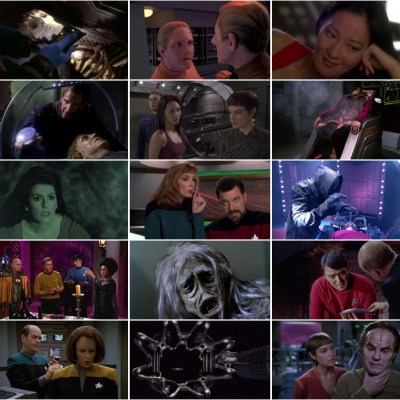Doctor Who’s Scariest Episodes: One Fan’s Horror Highlights
From Kinda to The Ark in Space and some terrifying sights in between, one fan traces his personal Doctor Who horror highlights. Which Doctor Who moments have scared you the most?
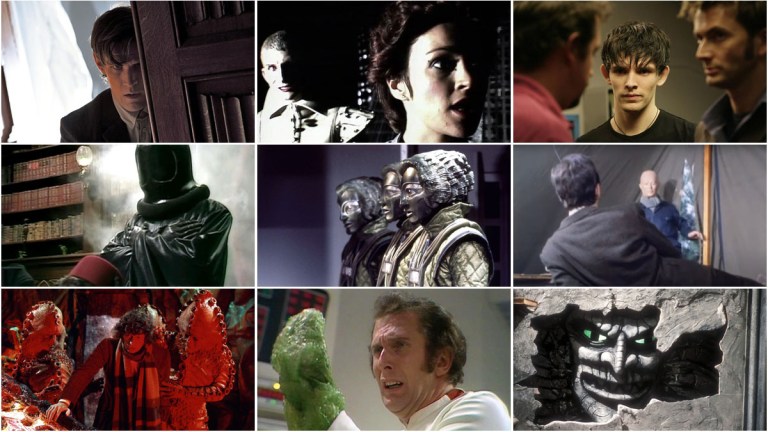
Based on all known criteria, I am an adult. Doctor Who is not meant to scare me very often. It’s meant to scare children, and if it freaks anyone else out that’s a bonus. I can write about which episodes scared me when I was young but then I have to factor in that I hadn’t seen most of Doctor Who when I was young. Born in 1985, my fears were based on what little I had seen on telly and the videos I could afford – I was less likely to be able to afford a VHS double-pack so saw fewer six-parters.
The resulting list is, therefore, more subjective than usual because there’s an element of autobiography to it. This isn’t a 36-year-old man trying to objectively list the 15 scariest Doctor Who stories, this is a 36-year-old man trying to remember which Doctor Who stories have scared him the most and in what context. Where possible I’ll try to offer some examples of similarly scary episodes, hopefully including the more objectively scary stories along the way. Note now that I didn’t find ‘Blink’ scary on broadcast (fun, but not scary – I cackled at the montage of statues at the end), so it’s not in here. I know most people did find it scary but we all have different lists. This is is mine, something to bear in mind as we start with:
15. The Happiness Patrol
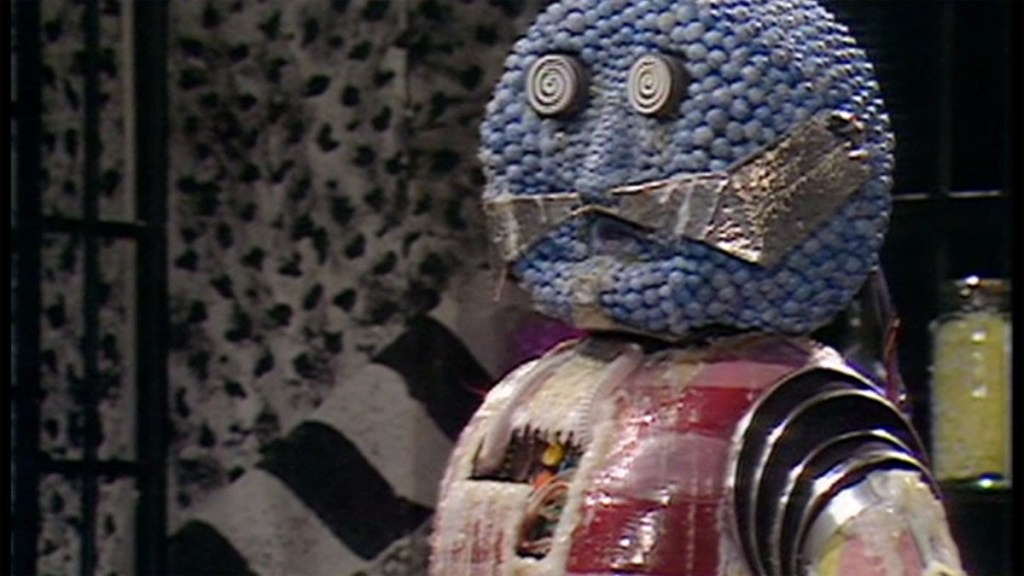
In November 1988 I was three and we’d just moved from the Highlands to just outside Glasgow. I’d heard of Doctor Who as the punchline to a Knock Knock joke, but had no idea what it actually involved. Possibly at my brother’s insistence we tuned into ‘The Happiness Patrol Part 2′. I lasted less than 10 minutes.
The Kandy Man, a torturer who looks so like a sweet company’s mascot that they took legal action, is divisive among viewers. Too silly for some, enjoyably and knowingly camp for others, but as a three-year-old the sight and sounds of a giant sweetie man screaming and flailing around absolutely terrified me. I remember running upstairs as the Kandy Man screamed and some people ran away up a ladder. It felt like a condensed burst of unsettling noises, starting with the title sequence and building to this crescendo where I simply could not cope anymore.
See also: ‘Paradise Towers’ is delightfully unsettling in places. Not so much the cleaning robots, but the Nice Old Ladies who turn out to be cannibals (or, as my friend Claire put it, ‘those twitchy shitbags’) and then get dragged down the waste disposal chute are straight from a fairy tale and linger in the memory.
(Hello, incidentally, to everyone on Facebook who immediately went to complain about ‘The Happiness Patrol’ being in the list without reading the context. You’ve got to read all the words guys.)
14. Hide
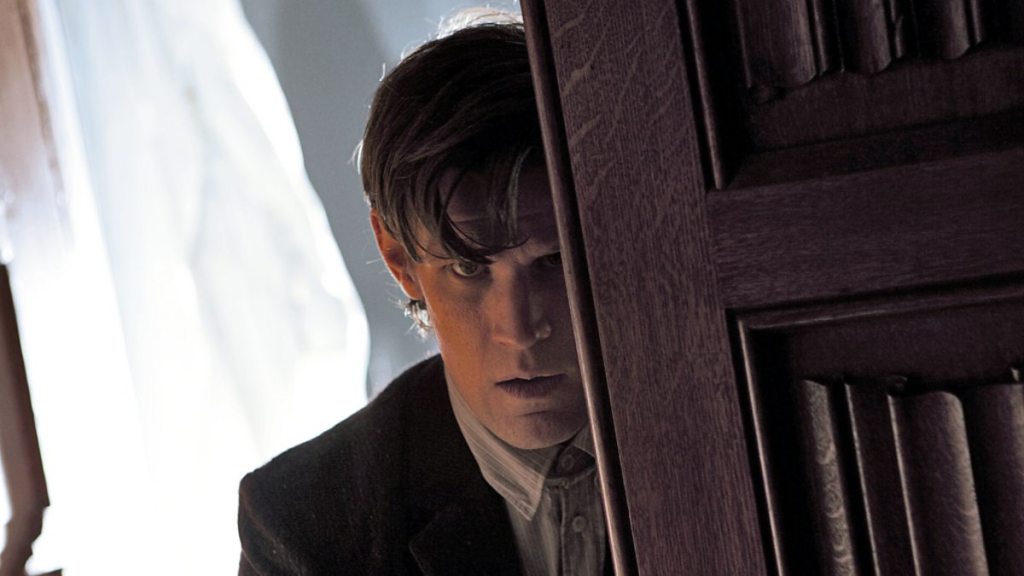
This is simply a well-made haunted house story. Amidst the scientific-sounding explanations for the ghosts, there are also the monster designs and the way they’re shot: asymmetric shapes detaching themselves from the darkness with small movements, so they viewer can’t make out what they’re looking at. The effect is creepy and intriguing, the lighting just right to create a series of twitchy jump-scares that are vastly more effective than most of the ones seen in Doctor Who. The effect wears off after a few viewings, but on broadcast it worked extremely well.
See also: ‘Ghostlight’ – a haunted house story that is not a haunted house story. Though it’s more about disorientation than jump scares, which brings us neatly onto:
13. Kinda
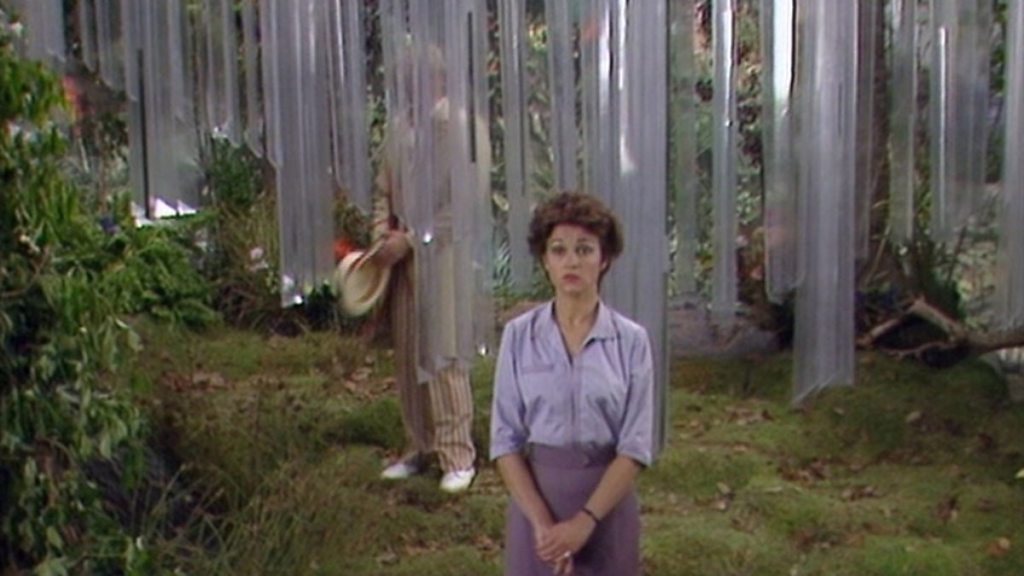
Occasionally Doctor Who remembers that it’s allowed to be weird and unsettling. ‘The Happiness Patrol’ falls into this category somewhat, but it’s got nothing on the staying power of ‘Kinda’. Even watching it now it has an intensity to its weirdness that gets under the skin. Strange things happen and there’s not much room to process them. We’re shown blazing images of indeterminate meaning, and before we can recover from what appears to be a vision of the apocalypse, a supporting character has died without obvious reason.
The scenes inside Tegan’s mind have an Edward Gorey vibe, all monochrome and sharp lines, and Hindle’s descent into child-like madness is chilling. Beyond the superficially disturbing mania and imagery, there’s depth to these shocks. Tegan’s visions are a grotesque commentary on the TARDIS crew (and to some extent Doctor Who itself), and Hindle’s rage finds form in horrifically blunt sentiments: “I have the power of life and death over all of you” – something that happens often in Doctor Who but is never so baldly stated. As well as the reminder of that power and what it means is the disquieting inkling that something has gone really very wrong here; his second famous line comes when the Doctor breaks one of his cardboard figures and Hindle screams “You can’t mend people, can you? You can’t mend people.”
Ultimately Hindle is proven wrong, but his mending comes from being freed from everything he ever knew: the pith helmets, the colonial expedition, the stiff upper lip attitude; it’s pretty clear what damaged Hindle, and as a viewer it dawns on you that ‘You can’t mend people’ is an unspoken assumption made every day.
See also: ‘Jubilee’, the Big Finish play that ‘Dalek’ is based on. Author Rob Shearman took the task of writing an anniversary story and turned that into a grotesque parody of British iconography and fandom. The English Empire celebrates its defeat of the Daleks by bringing one out every year so it can shriek ‘Exterminate’ and be safely ignored, and the sheer vitriol of their hatred becomes indistinguishable from the screaming of Daleks (using the audio medium for sensory overload the same way ‘Kinda’ uses its visuals).
12. The Awakening

Like the gargoyle Bok and the titular Azal in ‘The Daemons’, the monster in this story is connected to demonic and supernatural imagery. That’s always good for a frisson of fear. The Malus was a cyborg who fed off psychic energy, fear and hatred. To be honest, that’s less important than the sheer power of the imagery: a giant and malevolent face peering through a church wall, implying a huge creature below ground. Later it manifests inside the TARDIS. Clinging to the walls, its lizard-like body supporting a huge head, its skin a fish-like grey. Its presence inside the TARDIS just feels wrong, and when it starts to die it spews green slime. These images lingered in my head for years after watching ‘The Awakening’. It felt scarier than similar monsters because even in death it had the capacity to be unsettling.
See also: ‘The Impossible Planet/The Satan Pit’, especially the scene where the possessed Toby appears outside the base.
11. The Curse of Fenric

‘The Curse of Fenric’ has solid enough monsters (Haemovores: pustulant and purple walking corpses that consume blood like vampires), it kills a character played (very well) by Nicholas Parsons, and some inspired moments that are both beautiful and unsettling (mostly involving Sylvester McCoy looking melancholy, but the best one is the Doctor warding off a Haemovore attack through faith: murmuring the names of his companions with an intense serenity).
While its more standard moments of Doctor Who horror are effective, there’s a Lovecraft-tinged existential coldness here that is really chilling. Firstly the story presents a less clear-cut version of Good vs Evil than usual. The Seventh Doctor is opposing Fenric, a demonic entity whose ascension will doom the world to becoming a radioactive sludge, so that’s obviously good. However his methods are manipulative and potentially harmful. Likewise, the British military here are shown to be guilty of atrocities themselves: The bombing of Dresden is indirectly referenced, the British secret weapon turns out to be a trap for their Russian allies (“After the war, when they’re no longer our allies”). There’s a callousness to the British here exemplified by Commander Millington (who, after locking some soldiers in a tunnel with the Haemovores, recalls the time he sealed off a fire onboard ship: “We could hear men screaming behind the bulkheads for nearly an hour, and then the screaming stopped”).
It’s this realisation that Britain is culpable for atrocities (and also the Doctor, but that’s another story) that drives Reverend Wainwright to lose his faith and be killed by the haemovores. When confronted by two teenage girls, now vampiric, they simply state that this was always their fate: “We have black hearts. We were lost on the day we were born.”
And it’s true. It’s the bluntness of the statements that is haunting here, foreshadowing the reveal that Fenric has manipulated families over centuries to reach this point. The assertion that everyone is lost ultimately destroys him. How can you not love a show that uses Nicholas Parsons being killed by vampires as an allegory for despair?
10. The Power of the Daleks

Part of this story’s power is the tension of the inevitable: we know the Daleks are increasing in number, no one in the colony believes the Doctor’s assertion that they’re dangerous, and it looks like there’s going to be an armed revolution. David Whittaker and Dennis Spooner’s script puts all these pieces into place while creating a sense of unease. The new Doctor seems less sure of himself, while the Daleks have never been more themselves: that they’re manipulating the situation rather than going in guns-blazing allows their uncanny intelligence to come to the fore. The feverish chanting, the mocking claims of servitude, their casual acknowledgement that they will kill the man who restored them to life, these are all unnerving. The moment when a Dalek asks “Why do human beings kill other human beings?” is fascinating: it’s genuinely interested. You can see its intelligence showing, but underpinned by the way it interrogates one of its interests when it sees it in another person. The precision, the callousness, the reminder of what it wants to do, it’s all part of the simmering build-up. When we finally get to the mass slaughter of the final episode, it isn’t merely the abundance of death; it’s like a dam has burst.
See also: ‘Inferno’, another story that builds to the point of no return and then wipes out most of the cast.
9. Terror of the Zygons
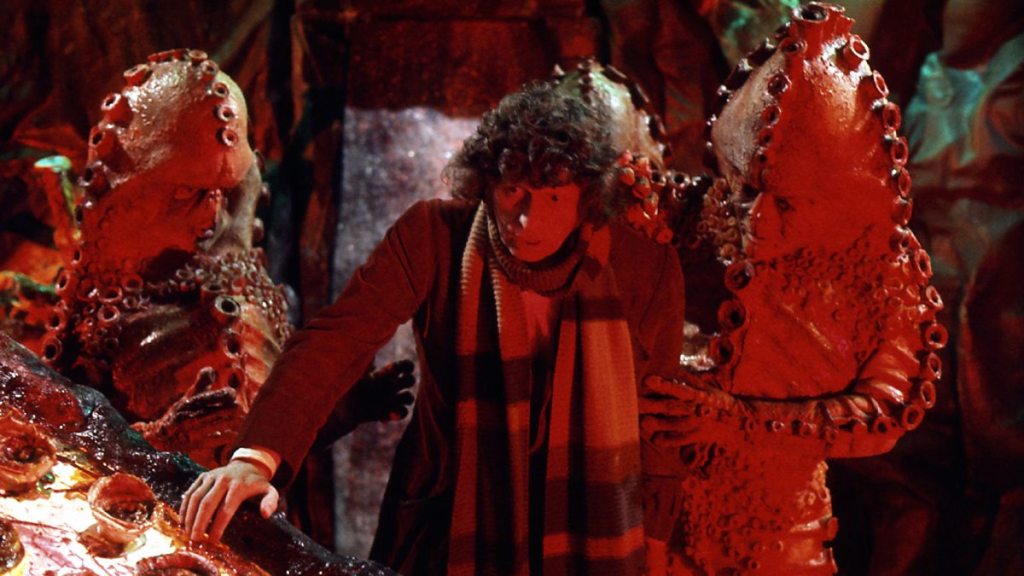
I first saw ‘Terror of the Zygons’ when asked to review the DVD release for this website. It feels more like a parody of Doctor Who at times, and the leader of the Zygons goes through some fairly Dr Evil cliches. Excluding the Skarasen (a stop motion attempt at a Loch Ness Monster style creature) the production is incredibly well-realised though. The Zygons look fantastic across all their forms, with their shape-shifting abilities leading to some fantastic jump scares and moments of creeping dread.
The cliffhanger to Part 1 has a monster reveal that is built up to fantastically well. We have no real idea what these creatures are or what they’d look like, and because we only know something is wrong (but not the specifics) their sudden appearance is jarring as well as startling. As with ‘The Invasion’ (where a Cyberman suddenly appears on the monitor instead of the expected henchman) director Douglas Camfield really nails some of the original run’s best jump scares.
He also knows how to let creeping dread build. The apprehension as Sarah slowly climbs the barn ladder looking for Harry is good, but one of the best horror images of Doctor Who is Sister Lamont in the forest. Camfield builds the tension with slow pans across the woodland, where previously we’d seen alien shapes, as the audience is one step ahead of the UNIT soldiers looking for a wounded Zygon. Sister Lamont, blood streaking down her arm, stumbles into view and actor Lilias Walker is both wild-eyed and controlled as she calmly bludgeons a UNIT soldier with a rock. It’s impossible to describe the sensation without context, but in that moment the sight of a blue and white medical uniform in the green forest feels utterly wrong, emphasised by Geoffrey Burgon’s light and ethereal score giving way to sudden bursts of uneasy drones.
8. Midnight
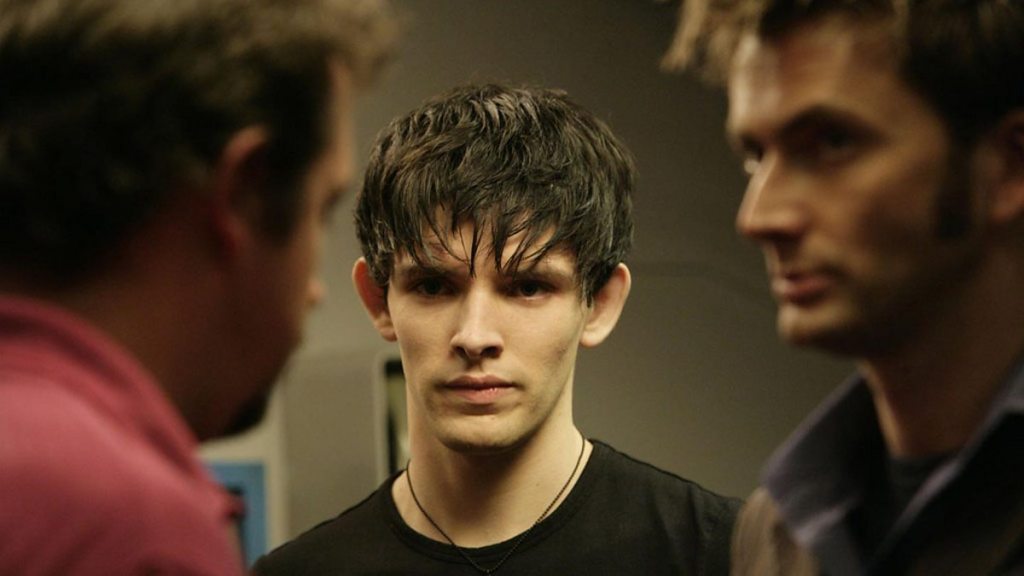
Russell T. Davies brought Doctor Who back as an ostensibly optimistic show: lots of dialogue about the greatness of humanity, the possibility of long-term survival, the power of faith and love in tough times. Beneath all that, though, was an underlying bleakness exemplified by the Toclafane in Series 3: the butchered and psychotic remnants of humanity who faced the end of everything, and couldn’t cope. Yes, humanity makes it to the end of time. And look what happens to them. Similarly the Doctor is highlighted as a wonderful figure who shows people a better way to live, but the journey always ends in heartbreak.
Davies brought the same pessimism to ‘Midnight’, a story where the Doctor takes a coach trip across a diamond planet with some tourists. An unknown entity possesses one of them, and the paranoia ramps up. The Doctor’s usual gusto and enthusiasm has no effect on his fellow passengers. In fact, it makes things worse. His voice has no power over them, and then it is stolen. Like ‘Waters of Mars’, we have a kind of possession shown through a simple idea (one that can be copied without spending anything) – repetition: an annoying child’s trick turned into an unsettling representation of an ineffable power.
Unlike ‘Waters of Mars’, the effects of this on the Doctor are given time to settle. We see him lose the bus, his fellow passengers are all Little England-prejudices and blinkered bluster, and the strong implication is that Davies is admitting that his Doctor Who is a comforting fantasy, a nice story, a hope rather than a reality. This is what the real world is like, and the Doctor is easily dismissed with his petulant cry of “Because I’m clever”. The day is saved by the stewardess sacrificing herself, and the Doctor has to cope with failing on multiple levels. No one learned anything here, including him. The thing that possessed him is still unknown, which for someone like the Doctor is going to eat him up just as much as everything else. The horrors of ‘Midnight’ lie in the admission of the Tenth Doctor’s faults, and this lands much better than the ‘Time Lord Victorious’ idea does later on.
See also: ‘Listen’, which also uses uncertainty to great effect. It stands out in the first half of Series 8 as the best use of Peter Capaldi’s early take on the role. The Doctor being abrasive and sometimes dislikeable is one thing, but the stories were struggling for an identity too. ‘Listen’ is an exception, in that it feels of a piece with his later stories.
This also uses Capaldi’s Doctor in a smart way: it uses the character’s desire for knowledge as a driving force behind his irascibility, taking that to extremes (this episode is almost like an episode of I Think You Should Leave Now but as existential horror instead of comedy). Capaldi’s fixation on the unknown (especially in the “I have to know” scene creates a great tension between what is possibly outside and what is definitely inside.
The fact that there may not be a monster at all makes this something of a companion to ‘Twice Upon a Time’ (where there turns out not to be an evil plan by anyone). After getting scares from the phrase “Are you my Mummy?” Steven Moffat and Douglas McKinnon manage to create extreme tension here with what might simply be a kid under a blanket.
7. The Deadly Assassin
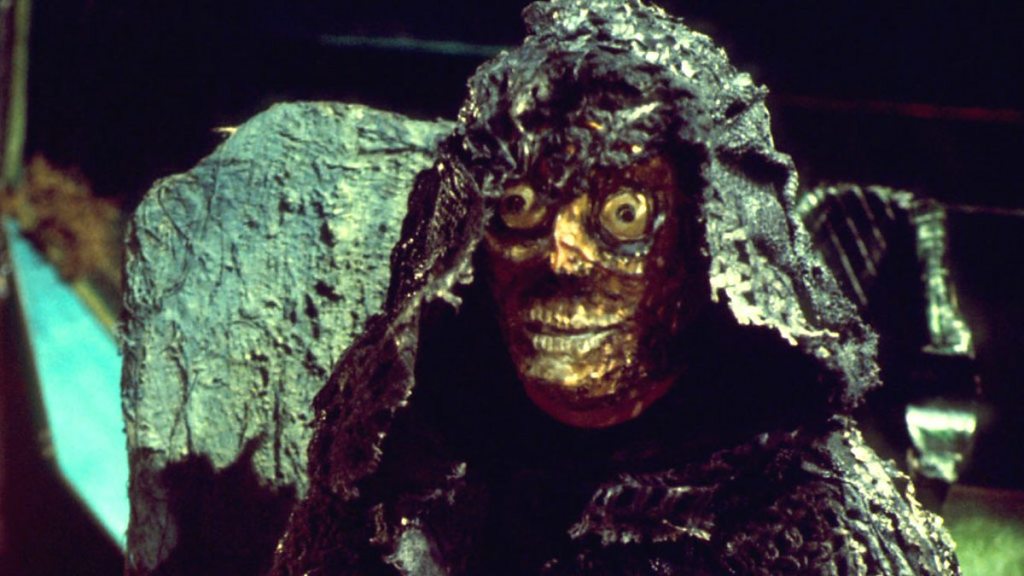
Firstly, the Master is an emaciated skeleton in this. His face leered from book and video covers, and was unnerving enough in itself. Then we had, amid the more traditional science-fiction deaths, Runcible being stabbed in the back with a giant knife. Mostly, though, we have the Doctor’s trip into a virtual reality within the Matrix, where the Master has sent his servant to hunt him down.
Initially this process feels like torture, putting the Doctor through gruelling and nightmarish scenarios that culminates in him getting his foot caught when the points change on a trainline, and what feels like multiple trains rushing towards him (all driven by figures disguised with scarves and goggles). There’s a constant turmoil of strange images and situations before the Doctor truly starts being hunted. He is shot and nearly drowned.
It’s not just the intensity, it’s that this is so unusual as a Doctor Who story. The Doctor is trapped in this virtual reality, across three episodes, and there’s no reassuring companion figure. The Master, previously comforting in his own way, is now a Grim Reaper figure consumed by rage. Instead we have TV’s own hero, adored by children and adults, being hunted by a masked man with a rifle, desperately trying to survive.
See also: ‘Heaven Sent’, where the Doctor is trapped in a revolving tower and pursued by a Death-like creature, trying to solve the mystery of why he’s there and what is happening. I’m not as big a fan of the episode as most people, but the two bits that always get me are the Doctor in the TARDIS explaining his thought processes and the bit where Capaldi’s voice breaks as you realise what he’s about to use as an energy source.
6. The Web of Fear
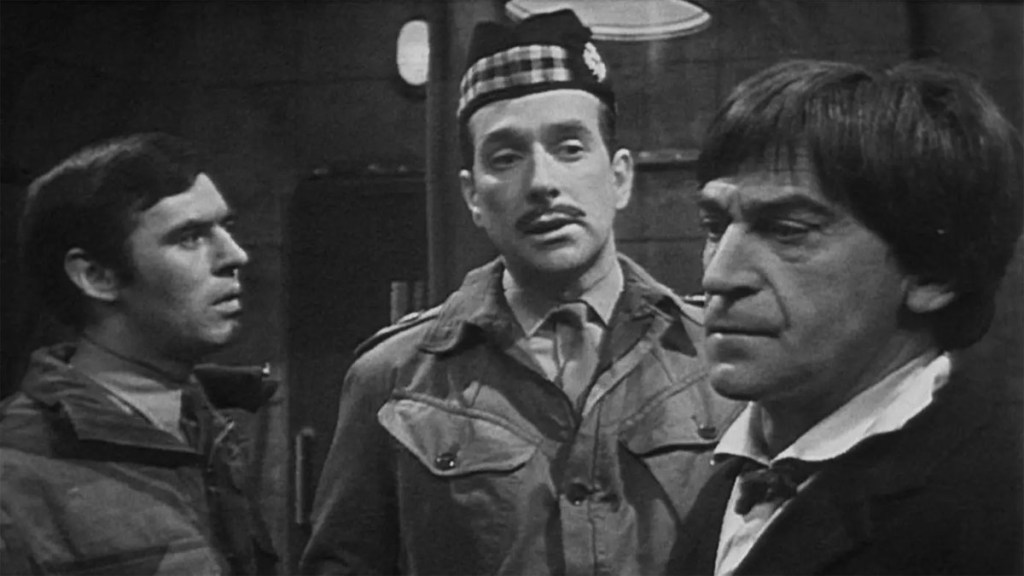
A base-under-siege episode that stands out in Season 5 for one simple reason: it’s extremely well-made. The base under siege is in the London Underground, and the sets were realistic enough to make people wonder if they’d filmed on location. A familiar setting well-realised helps with the horror, the contrast between the weird and the everyday, but also setting a long story that builds towards paranoia in dark tunnels is a smart move (and any kids on the underground after watching this could imagine foam bursting through the tunnels). The horror aspect of this story is further heightened by the number of supporting characters killed off.
The titular web is a potentially naff effect but the actors really sell the cobweb ray-gun effects as being a genuinely horrible way to die, with the make-up department also adding to the effect. The most effective scene is one I’ve talked about on Den of Geek before, where UNIT are attacked by Yeti at Covent Garden. This seven-minute scene initially shows UNIT successfully repelling the attack, but the sheer weight of numbers against them results in only Colonel Lethbridge Stewart surviving. There are a lot of nasty moments in ‘Web of Fear’, and this scene is a sustained barrage of them. The story does peter out towards the end, but the tension peaks at the end of Episode 5 when the base is successfully breached by the attacking Yeti.
See also: ‘Fury from the Deep’, which is similar in some ways, with a less familiar setting (a gas refinery) but some grounding in the domestic nonetheless. Although no whole episodes exist in the archive (it has been released in animated form) it works well on audio due to the importance of sound in the story, and continues the Troughton era’s exploration of evil foam. Also ‘Earthshock’ has a first episode set in underground caves featuring black androids whose weapons reduce people to a sizzling pile of green gunk, so that deserves a mention.
5. The Waters of Mars
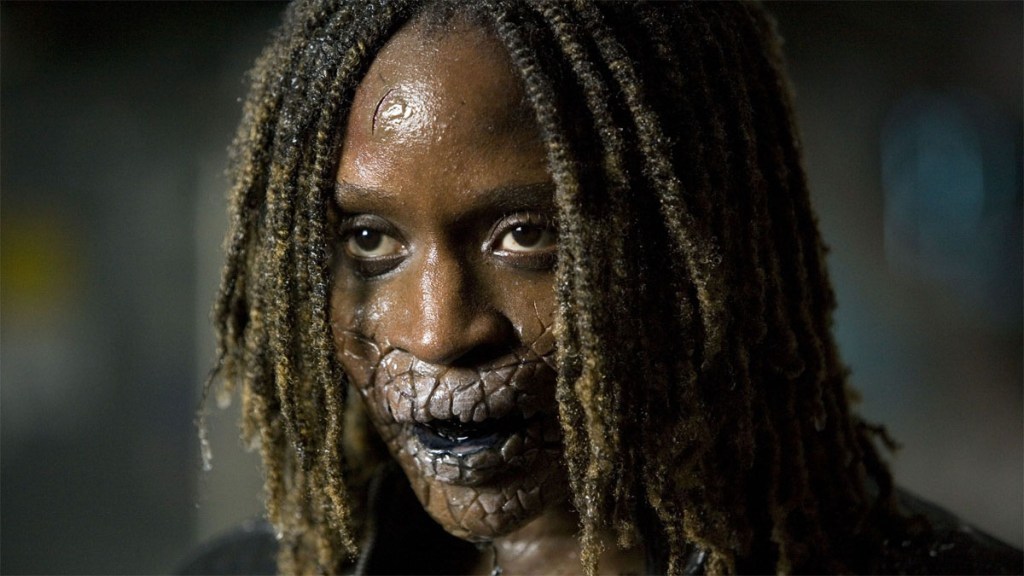
Doctor Who can riff on zombie films, but never go full blood and guts and gore with it. ‘The Waters of Mars’ uses zombies as a starting point and then tries to make it work for a family audience. What can the contagious element be? How to visually represent that? Can it be something you can imitate easily? From here we get a virus transferred by water, broadcast as Winter kicks in across Britain. It’s a simple idea and extrapolated really effectively to create a visually strong threat, allowing for the possession and desolation of a zombie film without the gore. Roman getting a single drop of water on him and telling everyone to leave him behind evokes a similar scene in 28 Days Later. The death of Steffi, trapped by a torrent of water as she watches a video of her children, is especially harrowing.
Added to this is the twist of the Tenth Doctor’s pyrrhic victory, only coming when he gives in fully to his narcissistic tendencies and attempts to change time. Swiftly resolved on screen, and then ultimately becoming a multi-platform spin-off, this was initially thrilling and worrying but was very much a flurry of excitement in television terms. The real horror of this story comes from the intense zombie spectacle in the build-up to the finale.
4. The Robots of Death
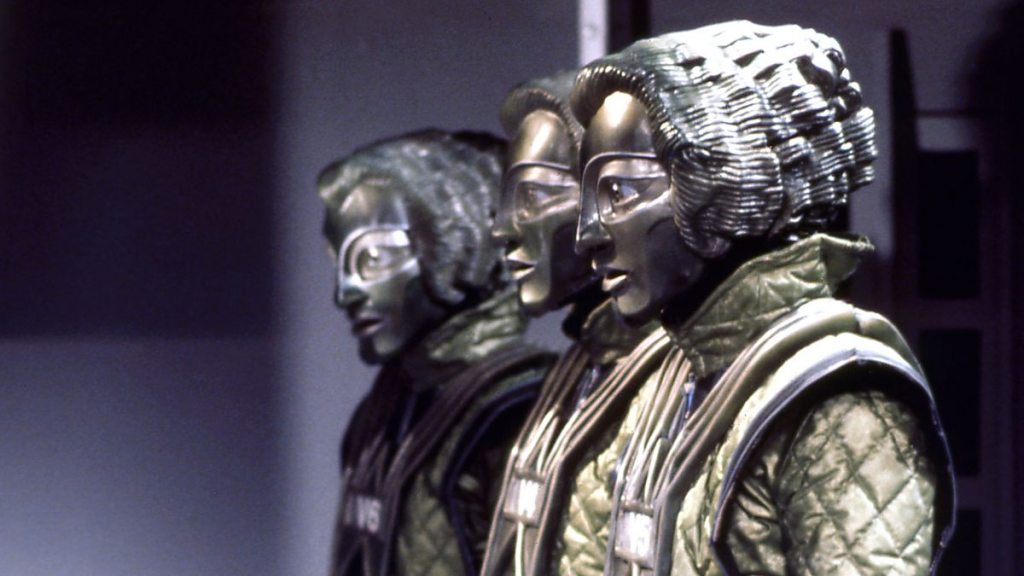
c/w Given the news in the UK, if you’ve read a lot about violence against women recently you might want to skip this one.
Obviously there’s death. Involving robots. Like ‘The Waters of Mars’ the horror here is mainly about the build-up to death. In this case it’s in the form of robots, their eyes red, walking towards the victim with arms outstretched and ready to strangle. It’s a potent image, especially as it’s repeated. Strangling is not a science-fiction death either, it’s brute force, and the story doesn’t shy away from this. We get robotic hand sticky with blood, half-seen robots pounding doors in an attempt to break in and kill.
This means that bits of ‘Robots of Death’ are hard to watch, most notably the scene where a robot breaks into Toos’ room and strangles her, largely seen from the robot’s point of view. It ultimately leaves her for dead. It is simply horrible, exacerbated by the robot’s calmness as it states it is going to kill her and “The door is not a barrier”.
3. Pyramids of Mars
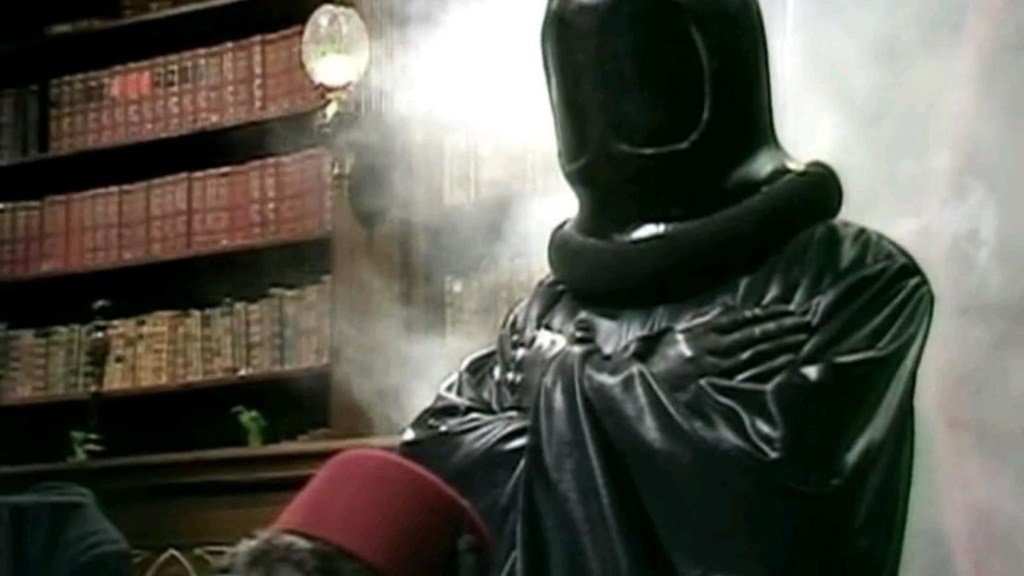
Following ‘The Green Death’ into a midday Sunday slot on BBC 2, this March 1994 repeat was the last one for six years. I must have caught it after coming back from Sunday School. I don’t recall whether I watched every episode or not, but two scenes were lodged in my memory.
Firstly, the death of Ernie. A minor character who survived the original script, director Paddy Russell decided instead that he should be killed by being slowly crushed between two advancing robot Mummies. This is one where the imagination, especially when you’re nine years old, makes it so much worse than what we actually see and hear.
Worse still is the cliffhanger to Part One, where we see Namin – who has been established as an intense and murderous henchman – summon Sutekh the Destroyer, claiming to have been part of a centuries long family line who sought to free him from imprisonment. A figure dressed all in black, heavy clothes and a featureless mask arrives through a portal and admonishes him: he is not Sutekh, merely his servant.
The word ‘merely’ is important here, because this figure then calmy states that Sutekh needs no other servant, and places his hands on Namin’s shoulders. He starts to scream. Steam rises from Namin’s body. He continues to scream. Sutekh’s servant almost murmurs the words “Die. I bring Sutekh’s gift of death to all humanity.” Steam rises. Namin continues to scream. Cue credits.
Which is still chilling, even now. The sheer nastiness of the death, the twist of the knife as the henchman is coldly dispatched really very slowly, the fact that the killer is not even Sutekh himself (so how bad must he be?), all of this is very overwhelming. There is, as was often the case, a dated riff on pop culture (you’d hope the show wouldn’t use Arabian stereotypes like this now) , but what happens at this cliffhanger is essentially Doctor Who imposing itself on the tropes of a Mummy movie (specifically 1971’s Blood from the Mummy’s Tomb).
The thing is, ‘Pyramids of Mars’ builds from here. At the end of Part 3, the Doctor confronts Sutekh himself, and Sutekh simply overpowers him. Casually so. He chuckles as he does it. It’s not a big deal. Tom Baker, meanwhile, is selling the pain and terror incredibly well. Seeing the Doctor toyed with like this is tremendously effective in raising the stakes even further and unsettling the audience: from this point it’s really hard to see how he’ll get out of this one.
See also: ‘The Brain of Morbius’. Another story riffing on Gothic horror fiction and Hammer horror movie adaptations, this borrowed heavily from Frankenstein and featured vainglorious disembodied brains, patchwork headless monsters, and someone being shot in the guts.
2. Spearhead from Space
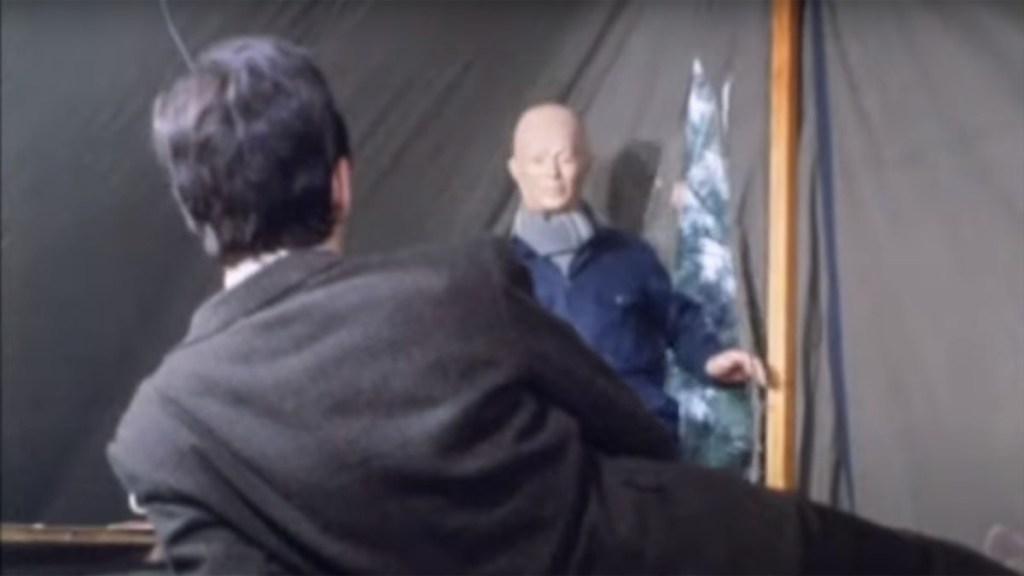
There’s the famous scene in which shop window dummies come to life and brutally shoot down members of the public (the sound design and practical effects combining to make the gunshots feel really powerful), and the Auton coming to life in the factory, but the first time I watched this (rented on VHS from a video shop while staying with my grandparents), I absolutely lost it at a specific point: when UNIT are tracking the Autons and Ransome (a former employee of a plastics factory who has already been scared witless by the creatures) is staying inside one of their tents, first the Auton slices through the fabric and steps through unopposed.
The Auton’s hand falls down on a hinge, exposing a gun. It’s ordered “Destroy. Total destruction”, stares impassively and fires at Ransome. A weighty, echoing explosion blasts him off his bench, flames flickering across his shirt. The Auton fires again. Another explosion, or perhaps an implosion, as the smoke and sound seems to move in reverse and Ransome’s body is gone completely. Again, I fled upstairs, and didn’t come down for some time. Watching it back, it’s so quick. Lots of short, kinetic shots and it’s all over before Ransome has time to make a sound. Apart from his body hitting the floor I suppose.
See also: ‘Terror of the Autons’ needs mentioning too, because while mannequins are used less effectively in it Robert Holmes does expand the potential of living plastic to create some memorable scenes. The suffocating chair and troll doll are garish and strange, perhaps suffering in their realisation, but the plastic daffodil that suffocates people by firing a film over their nose and mouth was absolute terrifying. That the film disappeared made it worse: you died unable to breathe or scream, anyone nearby pawing at your face, not knowing what was happening. Simply brutal.
1. The Ark in Space
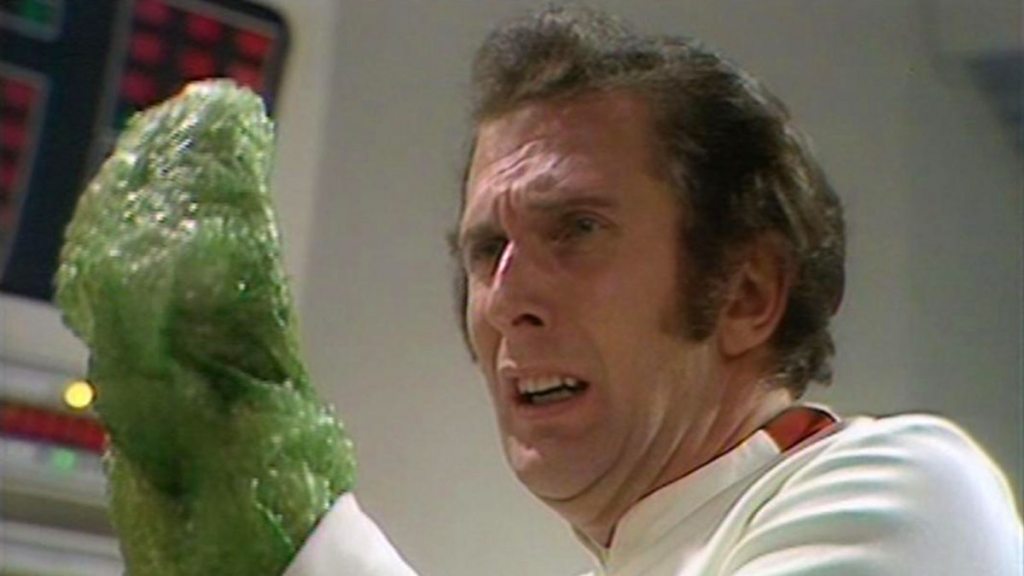
This is essentially the same idea as Alien, in that an alien creature (the Wirrn, modelled after a kind of wasp) lays its eggs in a human host and its offspring attack the remnants of the crew. Unlike Alien possession is used as one character is slowly turned into a Wirrn.
Watching this as a child was terrifying, because I didn’t see bubble-wrap. I was being told about wasps that lay their eggs in other creatures and told this was happening to these people on screen. The Doctor sticks some electrodes to his head and spasms. Giant slugs were – in some mercifully unspecified way – killing them. An – admittedly dickish – man was converted into a Wirrn. Swarms of them were attacking the survivors.
The backdrop to all this is: most life on Earth has been wiped out and an elite group (possibly sponsored by RADA) have been chosen to sleep in a space ark until it’s safe to come out. So that’s also harrowing.
Watching this now, it’s fairly clear and well-observed that bubble-wrap is used for a lot of the monster designs. It was novel then, but not so much now. What isn’t commented on is how well it works in some scenes. When the Wirrn grubs attack, rearing up to show pink undersides, it has the same repulsiveness as accidentally standing on a slug.
The psychological impact on Noah, the leader of the Ark, being turned into a Wirrn is also gutting. Indeed a scene where he pleads with his fiancée to kill him was edited down in the broadcast version because it was thought to be too much. What we do get is a rollercoaster: the initially silly image of actor Kenton Moore struggling gamely with a hand covered in plastic gives way to a stillness as Noah listens to a recording of the Earth High Minister that’s being broadcast across the Ark: a voice from a past, almost certainly dead, reminding Noah that his role is to save humanity. Moore makes it clear to the viewer that Noah absolutely knows he’s losing his own, and that the weight of his entire species is on him in that moment. It’s utterly devastating. Not bad for a man with his hand wrapped in green plastic.

